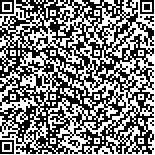| Quote
: |
李状,陈佳雪,罗佳辉,王洁,王启超,谢静涛.饥饿程度对大鼠学习记忆能力影响的实验研究[J].湖南中医药大学学报英文版,2017,37(1):29-32.[Click to copy
] |
|
| |
|
|
| This paper
:Browser 3378times Download 1101times |
| 饥饿程度对大鼠学习记忆能力影响的实验研究 |
| 李状,陈佳雪,罗佳辉,王洁,王启超,谢静涛 |
| (湖南中医药大学应用心理系, 湖南 长沙 410208) |
| 摘要: |
| 目的 探究不同的饥饿程度对大鼠的空间学习记忆能力的影响。方法 将84只成年健康雄性SD大鼠随机分为8组,A-G组分别饥饿处理6、18、24、30、36、42 h,H组饱食处理作为对照组,应用Morris水迷宫对SD雄性大鼠进行行为训练,评价其对大鼠空间学习记忆能力的影响。结果 (1)A-G组不同饥饿处理的各组大鼠定位航行实验潜伏期呈现先减小后增大的趋势,饥饿24 h组VS对照组(22.58±4.44)s VS(29.23±6.81)s,P<0.01;饥饿36 h组VS对照组(35.58±4.89)s VS(29.23±6.81)s,P<0.05。空间探索实验穿越原平台次数,饥饿24 h组VS对照组:(3.18±0.72)次VS(2.33±0.67)次,P<0.05;饥饿42 h组VS对照组:(1.64±0.64)次VS(2.33±0.67)次,P<0.05,呈现先增大后减小的趋势;同样,目标象限滞留时间百分比也是呈现先增大后减小的趋势,饥饿24 h组VS对照组(40.06±3.65)% VS(33.64±4.55)%,P<0.05;饥饿42 h组VS对照组(26.70±4.50)% VS(33.64±4.55)%,P<0.05。(2)上述实验结束后的G组连续饥饿处理42 h定位航行实验的潜伏期呈现减小后缓慢增加的趋势,连续饥饿处理时间6 h VS连续饥饿处理时间24 h(28.74±5.24)s VS(20.88±4.3)s,P<0.01;连续饥饿处理时间6 h VS连续饥饿处理时间30 h(28.74±5.24)s VS(19.97±6.14)s,P<0.01。结论 短期的饥饿(18 h和24 h)有助于大鼠空间学习记忆能力的提高,长期的饥饿(36 h和42 h)处理使大鼠的学习记忆能力下降。 |
| 关键词: 饥饿 Morris水迷宫 空间探索 定位航行 学习能力 记忆能力 |
| DOI:10.3969/j.issn.1674-070X.2017.01.007 |
| Received:April 21, 2016 |
| 基金项目:2014年度湖南省大学生研究性学习和创新性实验计划项目。 |
|
| Experimental Research on the Effect of Different Degree of Hunger on Learning and Memory Ability in Rats |
| LI Zhuang,CHEN Jiaxue,LUO Jiahui,WANG Jie,WANG Qichao,XIE Jingtao |
| (Department of Applied Psychology, Hunan University of Chinese Medicine, Changsha, Hunan 410208, China) |
| Abstract: |
| Objective To explore the effect of different degree of hunger on spatial learning and memory ability of rats. Methods 84 healthy adult male SD rats were randomly divided into eight groups. The groups of A to G are treated with hunger for 6, 18, 24, 30, 36, 42 h. The group H is treated as control. In addition, an experiment is carried out every six hours to group A and group H. The Morris Water Maze was used to conduct the behavior training of SD male rats, including its effects on spatial learning and memory ability of rats. Results (1) The escape latency of the A to G groups treated with different degree of hunger decrease firstly then increase in the place navigation test. The number of times for rats cross the original platform and the percentage of target quadrant retention time of the A to G group in the spatial probe test increase firstly and then decrease. The group of hunger for 24 h VS control group:(22.58±4.44) s VS (29.23±6.81) s, P<0.01; The group of hunger for 36 h VS control group:(35.58±4.89) s VS (29.23±6.81) s, P<0.05. The frequency of crossing the original platform in the spatial probe test have a downward trend after slowly rising, the group of hunger for 24 h VS control:group (3.18±0.72) times VS (2.33±0.67) times, P<0.05; the group of hunger for 42 h VS control group:(1.64±0.64) times VS (2.33±0.67) times, P<0.05. The percentage of target quadrant retention time in the spatial probe test also have a downward trend after slowly rising, the group of hunger for 24 h VS control group:(40.06±3.65)% VS (33.64±4.55)%, P<0.05; the group of hunger for 42 h VS control group:(26.70±4.50)% VS (33.64±4.55)%, P<0.05. (2) The escape latency of group G treated by continuously hunger shows the tendency of decrease slowly after the first increase in the place navigation test, the group of hunger continuously for 6 h VS the group of hunger continuously for 24 h:(28.74±5.24) s VS (20.88±4.30) s, P<0.01;the group of hunger continuously for 6 h VS the group of hunger continuously for 30 h:(28.74±5.24) s VS (19.97±6.14) s, P<0.01. Conclusion Short-term hunger (12 h and 18 h) contributes to improve the ability of spatial learning and memory of rats. Hunger for a long time (36 h and 42 h) could decline the ability of spatial learning and memory of rats. |
| Key words: hunger Morris water maze spatial learning and memory place navigation learning ability memory ability |
|

二维码(扫一下试试看!) |
|
|
|
|


